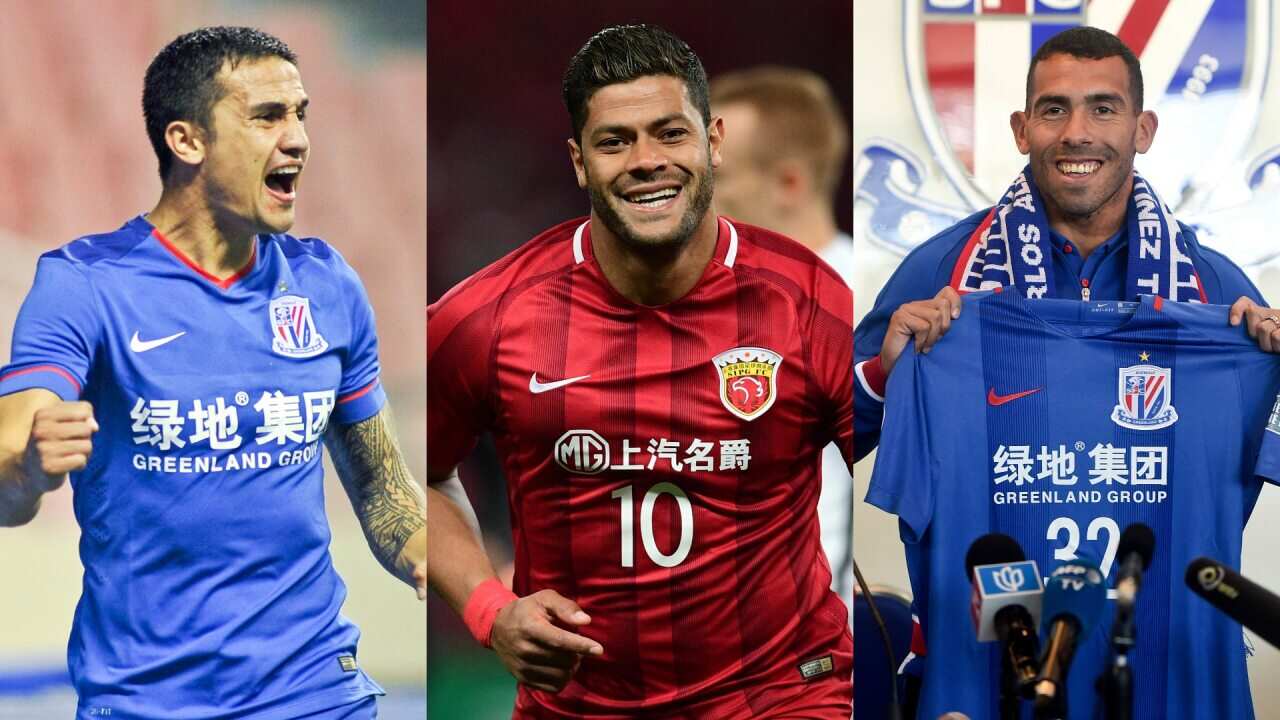During the 2016 Chinese Super League season, nine Australian players saw action.
Defenders were especially in demand and the likes of Matthew Spiranovic and Michael Thwaite must have enjoyed testing themselves against some of the best attacking talent around.
The chance to work with some of the biggest coaches names in the world was also a boon and the relatively lucrative contracts can’t have hurt either.
To have so many opportunities in one of Asia’s best leagues and the one with the biggest international profile was a big benefit for Australian football and was missed when it was gone.
And it did go. In 2019, there were no Aussies active in China.
In 2017, the Chinese Football Association (CFA) decided to limit the number of foreign players in the league.
The government was concerned at the massive amount of money leaving the country to line the pockets of clubs, agents and players in Europe and South America.
Previously clubs could field three foreign players and also one from a Asian Football Confederation (AFC) member nation but in 2017, the ‘Asian quota’ was removed, giving clubs less incentive to go shopping in its home confederation and players were soon released.
A few South Koreans and the occasional Uzbek were retained but, rightly or wrongly, the attitude among clubs was that they would rather import talent from Europe or South America than elsewhere in Asia.
This is likely to change in 2020.
Late last year, the limit was increased. In the coming season, clubs will be allowed this season to field four foreign players with the Chinese media already speculating that there will be a greater Asian representation in the league with more Koreans, Uzbeks and Australia coming in greater numbers.
One reason for this is that these players are cheaper and this is now on the mind of those in charge of Chinese clubs more than ever before.
Where Australia led the way with a salary cap, another major Asian league is following. Granted, the amounts are quite different.
Domestic players can’t be paid more than around $2.1 million AUD a year with those playing for the national team getting 20% more.
Newly-signed foreign players will be able to collect as much as $4.75 million AUD.
Chinese officials had looked at the Australian cap. The conclusion drawn was that the A-League version helped to keep clubs on the straight and narrow even if the amounts put Australian clubs at a competitive disadvantage in Asia.
The amounts on offer in China are still high compared to main rivals Korea and Japan.
This is all about trying to make clubs more sustainable and salaries should not account for more than 60% of spending and clubs are limited to paying a total of around $205 million a year.
Chinese Football Association chairman Chen Xuyuan explained the rationale behind the changes. “Our clubs had too much money burned and our professional football has not been run in a sustainable way. If we don’t take timely action, I fear it will collapse.”
What China especially liked about the Australian salary cap was how it encouraged players to head overseas. There are Australians playing all over Asia and Europe.
This is what the CFA wants for Chinese stars and sees it as a vital part of the country's development.
The general rise of salaries in China in recent years have made it more difficult for Chinese players to look to Europe and elsewhere in Asia.
The stars themselves prefer to stay home and make more money while European clubs are discouraged from taking a punt on a Chinese import - there are not many past success stories - as they don’t come cheap.
Of course, there have been rules changes before and it remains to be seen if or how some clubs can get around the rules.
Bonuses are not covered and this could be one area to complicate matters and then there is the possibility of incentives to ‘persuade’ players to sign for a club.
It will be fascinating to see how the new rules work - or don’t work - as Chinese football looks a little more Australian.










